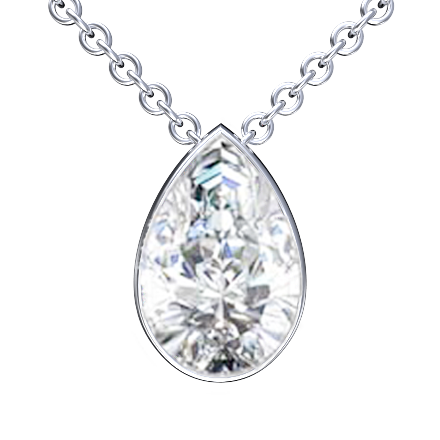Diamonds are cut and shaped differently, each magnifying the brilliance of the stone through its individual aesthetic distinctiveness. In this century, there are 10 known cuts in which diamonds are shaped, sized and sold in the market. While some are fancy, others are classic. Each of these cuts bring the best of the shape, size, clarity and color of the stone. Listed here are the ten cuts in which diamonds are sold in the stores. The stone in all these shapes are sold loose as well as set in ornaments.
 Round: 75% of the stones mined and separated for sale are shaped round. Despite the appearance of many fancy shapes, the brilliance and beauty of this stone are not lost on the buyers. Round cut diamonds have maximum brightness, thanks to the facets that reflects the rights perfectly to light up the shine and fire.
Round: 75% of the stones mined and separated for sale are shaped round. Despite the appearance of many fancy shapes, the brilliance and beauty of this stone are not lost on the buyers. Round cut diamonds have maximum brightness, thanks to the facets that reflects the rights perfectly to light up the shine and fire.
Princess: This cut has crossed the threshold of the millennium and has stepped into a new era without losing an ounce of its immense popularity. First seen in 1980, a round-cut diamond is the first choice of solitaires. The princess cut is resilient to both minimal and complicated jewelry designs and that makes it an easy put.
Emerald: The highlight of emerald cut is its steps. The pavilions of emerald cut on the sides are chipped into a series of steps which make the top look larger and sides brilliant. The sparkle of the steps radiate through the table of the stone as light and shadow bounce off the cuts conjuring a hall-of-mirror-like illusion.
Marquise: This one looks like a football, but that’s not why it is so popular. A Marquise cut conjures an illusion of extra mass to the stone even when it is only an insignificantly sized one. The length of the stone and its slim curves stretch the surface area giving it the advantage of maximum perceived size.
Oval: This brilliant cut shape is known for its brilliance and fire which is parallel to a round cut diamond.
Cushion: It has some semblance with the throw pillows of a sofa, but with the modification of rounded sides.
Pear: Resembling a pear fruit, upside down, or a water droplet, still inverse, the logic of this cut is half round and half-marquise.
Heart: Shaped to the universal symbol of love, this cut can be given to stones as small as .50 carats.
Asscher: A discovery of the Asscher brothers, this closely imitates an emerald cut, with higher crown, larger steps and a smaller pavilion.
Radiant: Perfectly rectangular, this one is a lively and vibrant cut.





